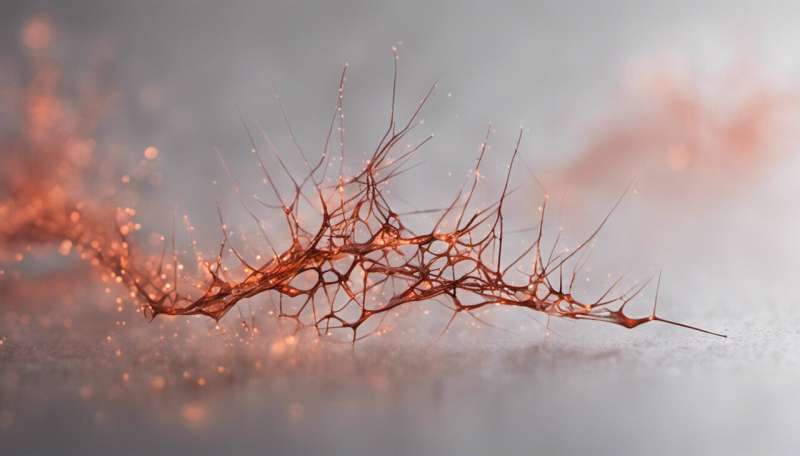Pinpointing the origins of arthritis

(Medical Xpress) -- A large, RIKEN-led, international team of genome researchers has found nine new associations of gene regions or loci with the autoimmune disease rheumatoid arthritis. The loci, found in ethnically Japanese populations, had been undetected in previous European studies. Three of the loci are also associated with other autoimmune conditions in the Japanese, one with systemic lupus and two with Graves’ disease.
The researchers, led by Kazuhiko Yamamoto of the RIKEN Center for Genomic Medicine in Yokohama, Japan, believe they have now identified almost all the important genes involved in rheumatoid arthritis in people of Asian heritage. The work, published recently in Nature Genetics, demonstrates that there are loci associated with rheumatoid arthritis both specific to Asian populations and shared with people of European heritage.
“In time, we think the genes we have identified will be good candidates as drug targets,” says senior research scientist Yuta Kochi, one of the corresponding authors of the paper. “And we hope that eventually we will be able to predict outcomes such as the severity of the disease or likely drug response given an individual’s genotype.”
Rheumatoid arthritis is a chronic and painful inflammatory condition that can afflict many tissues and organs, but mainly attacks flexible joints causing cells to generate excess fluid and swell. Although it can affect people of any age, rheumatoid arthritis is normally considered a condition of ageing typically beginning to affect sufferers at between 40 and 50 years old.
Making sense of large data sets
The researchers used genome-wide association (GWA) studies to determine the location of genes with links to the development of the condition. Such studies use microarray technology to compare patterns of the gene variants or alleles in a population of people with a particular condition—in this case rheumatoid arthritis—with those of people who do not have the disease. When a specific allele is found to be significantly more frequent in people with a disease, then it is said to be ‘associated’ with that disease. These associated alleles are then considered to mark a region of the human genome that influences the risk of developing that disease.

In the case of rheumatoid arthritis, previous GWA studies in European populations by other researchers had unearthed more than 35 genes associated with susceptibility to the condition. The RIKEN-led team, however, believed that studies in Asian populations might reveal further ethnically specific genetic associations, as had been the case for other medical conditions reported in the literature.
GWA studies can discriminate susceptibility even more finely if several populations from different sources are combined in a meta-analysis that provides larger numbers and greater variability. Thus, Yamamoto and his colleagues initially combined the data from the Biobank Japan Project, Kyoto University and the Institute of Rheumatology Rheumatoid Arthritis for populations of ethnically Japanese people.
In total, across about 2 million gene variants, they analyzed the DNA of 4,074 individuals suffering from rheumatoid arthritis and compared these data against 16,891 people who did not have the disease. They found seven regions that showed significant association with rheumatoid arthritis. Four were previously known from the European studies and three were new discoveries.
Yamamoto and colleagues then conducted another study: they compared two independent groups of 5,277 Japanese rheumatoid arthritis cases against 21,684 controls and added them to the first study in a combined meta-analysis. This resulted in the discovery of another six previously unknown regions of genetic association.
Widening the net
From previous studies, other researchers had reported that for some regions, susceptibility to rheumatoid arthritis was associated with increased risk to other autoimmune diseases. Yamamoto and colleagues therefore undertook GWA studies of populations of Japanese people suffering from systemic lupus erythematosis or from Graves’ disease. They observed significant association of one rheumatoid arthritis locus with lupus and two others with Graves’ disease.
Finally the team conducted a multi-ancestry comparative analysis between Japanese and European groups. They found significant associations with rheumatoid arthritis at 22 loci in the Japanese population and 36 in the European. Of these, 14 of the loci were shared.
“This analysis provided evidence of significant overlap in the genetic risks of rheumatoid arthritis between Japanese and Europeans,” the researchers note. Even so the spectrum of genes associated with rheumatoid arthritis in Asian populations is substantially different from those identified in European populations.
“We think our findings could have several applications, although these will take time to develop,” Kochi says.
“First, we suggest that the genes identified by GWA studies will provide useful candidates to test as drug targets. Second, because different alleles may influence the functioning of an individual, they may also influence the course of the disease in an individual. So, knowing the genotype may allow us to predict the outcomes of a disease in individuals, such as severity or response to drugs,” he explains.
“In order to pursue these ideas, we will undertake functional studies of the genes to investigate how they cause rheumatoid arthritis. In addition, in collaboration with researchers in hospitals, we will undertake clinical studies to investigate the association between the different alleles and clinical outcomes.”
More information: Nature Genetics 44, 511–516 (2012) doi:10.1038/ng.2231















